Recently, my fellow Stuart Lorde has asked me what I think about Spotify's Discovery Mode — a new feature (currently in beta), allowing artists and labels to promote chosen tracks on Spotify's radio and autoplay by accepting a discounted royalty rate for the streams stemming from such promotions. With many elements to consider, it took me a while to wrap my head around the potential impact of Discovery Mode on the music business and the streaming economy. Yet, I finally reached a point when I feel comfortable sharing my thoughts on this controversial feature, so, without further ado, here's my take on it. Hopefully, it will cover all the bases and help you form an opinion of your own.
"We were promised that the quality of the music and the preferences of listeners would determine success — not money. Discovery Mode" breaks that promise."
While this point of view might be a bit naive, a2im raises a legitimate concern on the pay-for-play nature of Discovery Mode.
A Concern for Fairness and Recommendation Integrity
Pay-for-play isn't exactly new. Paid advertising on YouTube, TikTok, or social media is a common practice for artists of all shapes and sizes, whether they are entirely independent, signed to an indie, or backed by a major. Marketing budgets can go a long way in expanding artists' careers and driving streaming consumption — I don't think this will come as news to anyone.
Yet, streaming services, especially their personalized features, are expected to remain unbiased towards the artist's marketing budgets. Why? Well, not everyone can make it on an editorial playlist, but you can always count on your music getting picked up by the algorithms and growing your audience that way. While editorial playlist placements are finite, recommendations aren't — so everyone should get a chance.
Artists commonly rely on the fact that their music could be recommended if they get enough traction within a particular music style or community. Algorithmic recommendations have the potential to become one of the few leveled spaces in the music industry, where artists with small but engaged audiences can make it regardless of their overall popularity — or their marketing budgets. Introduction of paid promotion within these spaces compromises this promise of algorithmic recommendations.
However, the fact is that algorithmic placements were never really this closed-off system people tend to imagine. Successful digital advertising campaigns, especially for emerging artists, often revolve around triggering algorithmic playlists to amplify the ad spend. Besides, while recommendation algorithms appear as black boxes to most professionals in the industry, that doesn't mean that they actually are.
Sure, there was no clear-cut way to amplify the artist's algorithmic presence — but there are steps you can take to make sure that algorithms perceive your music in the right way and serve it to the right audience. The problem is that the music industry at large still lacks the knowledge required to leverage these recommender systems — case in point, one of the most-read articles on our blog revolves around helping professionals understand the role of the artist-sourced metadata and leverage algorithmic recommendations to optimize their presence across DSPs. In a way, you could influence the recommendation algorithms long before Discover Mode came around.
"My fear is that it would turn discoverability on Spotify into pay-to-play,"
Andrew Sinclair, p.k.a Approaching Nirvana, for EDM.com
At the same time, the music industry's backlash over the new feature is more than understandable. With the streaming economy already falling short of bringing sustainable revenue to most middle-class artists out there, it's only natural that the first question people ask is: well, what if most emerging/indie artists opt-in for Discovery Mode? Imagine that the feature is openly available to every artist on the platform through Spotify for Artists — that would likely set off a prisoner's dilemma type of effect, with everyone opting for Discover Mode to score some points with the recommender system and stay competitive.
After a few years, we'd get back to square one: algorithmic playlists would be balanced again — everyone would just make less on streams stemming from personalized recommendations. Besides, beyond potentially diminishing the royalty flows for artists, Discover Mode could also compromise the integrity of the recommendation features in the eyes of the consumer.
Indeed, Discovery Mode would've been less controversial had it been limited to free users, with sponsored recommendations clearly presented as such. The potential fairness concerns could be resolved by establishing a more transparent system and openly labeling any sponsored content on Spotify. The issue, however, is that autoplay features are mostly used in contexts where users don't look at their screens — so the sponsorship would have to be announced through audio rather than on-screen display.
That said, it's also important to note that Discovery Mode five years from now will likely be different from Discovery Mode we're presented with today. Some of the issues, like sponsored content labeling, might be addressed further down the road. After all, DIscovery Mode is still in beta, and like any other feature under development, it's meant to evolve considering the industry and user feedback.
The Long-awaited On-platform Streaming Advertising and Targeting Tools
Now, let's break down Discovery Mode from an opposite point of view. Spotify tries to position the new feature as a long-awaited marketing tool that would finally allow artists to advertise their music directly on Spotify, instead of pushing traffic across from other platforms. After all, some of Spotify's biggest competitors have historically allowed artists to advertise on their platforms. Let's take Youtube as an example: currently, the VoD giant is the single most popular consumption channel for music, with upwards of 70% of all consumption on the platform mediated by algorithms. So have artists with large budgets thrown money at the YouTube ads in order to dominate discovery on the platform?
They certainly have — artists historically engaged with both pre-roll and in-display TrueView ads on Youtube to boost their releases — to the point where YouTube had to amend its charts system following the Badshah ad campaign controversy and stop accounting for paid views when calculating the top performing artists on the platform.. However, did such pay-for-play advertising techniques prevent other artists from breaking out on YouTube organically? Surely not.
So, let's say you have a marketing budget to spend. Due to the lack of attribution data on streaming services, the industry is still missing vital targeting tools that would link advertising spend with the actual listenership. Once a person lands on the streaming platform, there's little insight into their behaviour on the platform. Maybe, they’ve immediately bounced — or listened through the entire artist playlist. In that context, spending money on platforms where users go to listen to music is probably a good bet. After all, reaching the consumer at the moment of purchase is a valid and well-established marketing technique.
However, when it comes to the music industry, Spotify and other DSPs are the only ones who have the data required to enable such fan targeting. Both Spotify Marquee and Discovery Mode are designed to provide tools that will allow artists and their teams to do exactly that — promote their content right in the listening session, where reach is most likely (or, in the case of Discovery Mode, guaranteed) to convert into streams.
Besides, among the 80K songs uploaded to Spotify every day, how many are actual priorities for artists and their teams? That's another pillar of Discovery Mode's positioning: opening up the black box of and enabling professionals to provide input to the Spotify’s recommender systems. From that point of view, the feature has the potential to provide a coherent framework that would give artists and their teams more control over which of their songs will be recommended — and to whom. Which is, unquestionably, a move in the right direction. The question is, though, did it have to come at the cost of decreased royalty rates?
Having said that, don't rush to crown Discover Mode as the music's first advertising channel. For now, music will be promoted only through personalized radio & autoplay — features mainly used by casual listeners, consuming music while doing something else like working, driving, or cooking. A stream is not actual attention nor fandom. It's only listenership. So a decision to engage with Discover Mode should depend on your campaign's goal. Do you want to reach new listeners? Get more streams and build up social proof? Or get more superfans and engagement? If you aim to build an engaged audience, Discover Mode probably isn't the best way to go. Instead, it's just a component of your overall marketing plan: promote a song on Spotify's autoplay to create awareness and familiarity with a song — similar to how the music industry historically engaged with terrestrial radio campaigns.
Streaming services: promotion platforms or monetization channels?
With many discussions in the post-pandemic music industry revolving around how artists can be better compensated for their work within the streaming economy, it's counterintuitive to suggest that a product that is supposed to help artists get discovered on streaming would also reduce their per-stream income. However, let's be pragmatic: even though the concerns on the sustainability of the streaming economy are legitimate, emerging artists don't make significant money on streaming platforms anyway. Streaming economics can't be solved in a day, and so for now, many artists have to consider DSPs as a promotion vehicle rather than a monetization tool.
YouTube tends to be mainly perceived as such, with little backlash from the music industry (or, at least the independent/DIY subset of it) — perhaps because music videos are such a well-established promotional technique. The only real difference from streaming services is that YouTube allows artists to freely promote off-platform content without restricting such capabilities to show tickets or merch. Or, take Bandsintown, for example, with their Promoter service allowing artists to target their own audiences on the platform via email and promote other content beyond concert tickets.
DSPs are exploring these new promotional instruments for obvious economic reasons, and Discover Mode won't be the last of such on-DSP advertising tools to enter the market. Not everyone is willing or able to pay for a Premium subscription, and so another way for streaming services to generate money is to offer audio creators a way to promote superfan-enabled offerings like artist subscriptions or other high-value off-platform content. This approach is hardly new — artists have been able to promote tickets and merch on their Spotify pages for ages now. If that is Spotify's solution for the challenges of the streaming economy, perhaps the music industry should bear with the DSP-giant and see what it has to offer.















